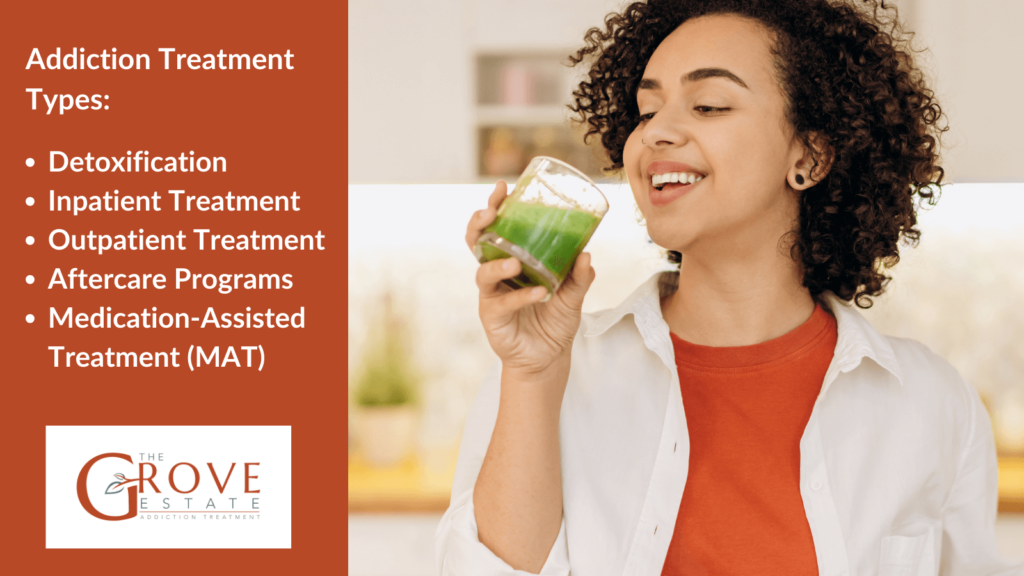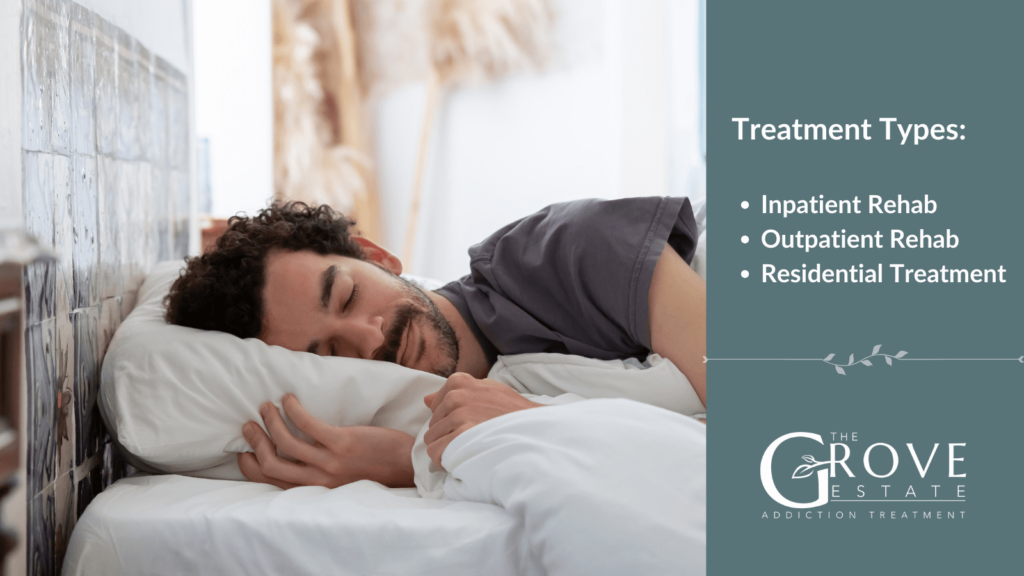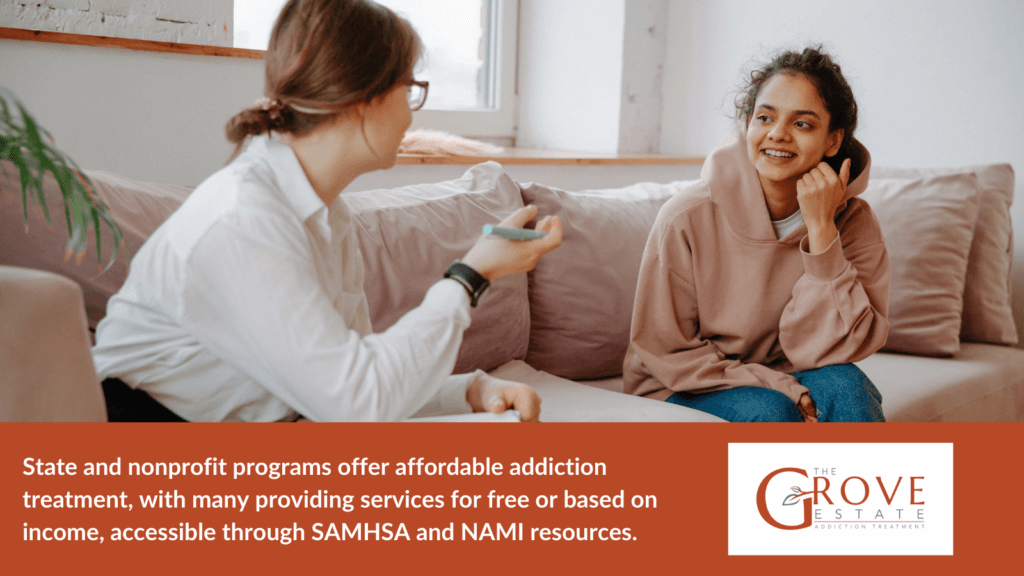Many people struggling with addiction avoid seeking treatment due to a perceived high-cost barrier. However, the financial burden of addiction itself far outweighs the cost of rehab. Getting help now can prevent these negative consequences and put you on the path to recovery.
The statistics are alarming: millions of Americans face addiction. A 2016 report by the U.S. Surgeon General estimates nearly 21 million people in the United States have a substance use disorder. Yet, a mere 10% receive treatment. The cost of rehab is often cited as a major deterrent. Between 2011 and 2014, almost 40% of those needing treatment avoided it due to perceived affordability issues or lack of health insurance.
The truth is, the cost of rehab pales in comparison to the long-term costs of addiction on your health, finances, and relationships. Additionally, many people don’t realize that insurance can significantly reduce the price of rehab. New legislation requires insurance companies to cover addiction and mental health treatment, making treatment more accessible than ever before.
Understanding Rehab Costs
The cost of rehab can vary dramatically, ranging from a few thousand dollars for outpatient treatment to hundreds of thousands for luxury inpatient facilities. There’s no one-size-fits-all answer, and the final price tag depends heavily on the specific program you choose and the level of care you require.
Several factors significantly influence rehab costs. The type of program is a major consideration. Inpatient programs, where you live at the facility during treatment, are generally more expensive than outpatient programs, which allow you to receive treatment while living at home. The length of your stay also plays a role. Naturally, longer programs will cost more. For example, a 30-day inpatient program can range anywhere from $6,000 to $20,000, while programs lasting 60 or 90 days can reach $60,000.
Location is another factor to consider. Treatment facilities in areas with a higher cost of living tend to be more expensive than those in more rural locations.
The amenities and services offered by the rehab facility can also significantly impact the cost. Luxury facilities with high-end offerings like private rooms, gourmet meals, and concierge services will come at a premium compared to more basic facilities. If the rehab program involves detoxification or requires ongoing medical care, this will add to the overall cost as well.
Finally, your health insurance coverage can significantly impact your out-of-pocket expenses. Some insurance plans may only cover a limited portion of rehab treatment or have specific requirements for coverage. It’s important to understand your plan’s details before starting rehab.
How Much Does Rehab Cost?
There is no direct answer to how much rehab costs. The cost depends on various factors like location, severity of addiction, type of rehab required, and possible use of medications. All these factors mean that rehab can cost from a few hundred dollars for short non-medication involving outpatient procedures to several thousand dollars in luxury rehab centers.
What Determines Rehab Price?
The cost of rehab can vary significantly, posing a hurdle for some seeking help. Understanding the factors influencing the price tag empowers you to make informed decisions when exploring treatment options. Here’s a breakdown of the key factors that determine rehab costs:
Types of addiction treatment
The type of addiction treatment program you choose significantly impacts the overall cost. Here are the main categories:
- Detoxification: This initial phase involves medically managed withdrawal from addictive substances. Detoxification programs can be offered as part of an inpatient program or on an outpatient basis. The cost varies depending on the intensity of medical support required and the length of the detox process. Addiction center estimates that most outpatient detox programs range from $1,000 to $1,500 in total.
- Inpatient Treatment: Inpatient rehab provides 24/7 care in a residential facility. This intensive program offers a structured environment for individuals struggling with severe addiction or those who require a high level of support. The cost is generally higher due to the comprehensive care, including housing, meals, and therapy sessions.
- Outpatient Treatment: Outpatient programs allow individuals to live at home while attending treatment sessions several times a week. This option is typically less expensive than inpatient care but may not be suitable for everyone, particularly those with severe addictions.
- Medication-Assisted Treatment (MAT): MAT programs combine medication with counseling and therapy to manage addiction. MAT costs vary depending on the specific medication used and the frequency of doctor visits.
- Aftercare Programs: Aftercare programs provide ongoing support and relapse prevention strategies following primary treatment. These programs can be offered in various formats, including individual or group therapy sessions, and the cost can vary depending on the intensity and duration of the program.

Inpatient vs. Outpatient Rehab
The decision between inpatient and outpatient rehab significantly impacts the cost. Inpatient programs are generally more expensive due to the comprehensive care provided, including housing, meals, and around-the-clock supervision. Outpatient programs, on the other hand, allow individuals to maintain some level of normalcy in their lives while attending treatment, resulting in a lower overall cost.
Luxury vs. Standard Facilities
The amenities and services offered by the rehab facility also play a major role in determining the cost. Luxury facilities with high-end offerings like private rooms, gourmet meals, personalized therapy plans, and concierge services will come at a premium compared to standard facilities that provide necessities and core treatment programs. While luxury amenities can offer increased comfort and privacy, they may not be necessary for successful recovery. Prioritizing the core treatment program over luxurious extras can help you find a more affordable option.
What is the Average Cost of Drug and Alcohol Rehab?
The cost of drug and alcohol rehab can vary significantly depending on the type of treatment you choose and several other factors. Here’s a breakdown of the average costs and how different treatment types compare:
Cost Breakdown by Treatment Type
- Inpatient Rehab: This intensive program offers 24/7 care in a residential facility. Inpatient rehab is generally the most expensive option, ranging from $5,000 to $30,000 for a 30-day program. The exact cost depends on the specific facility, the services offered (such as individual therapy, group therapy, and medical care), and the length of your stay. Longer inpatient programs will naturally cost more.
- Outpatient Rehab: Outpatient programs allow individuals to live at home while attending treatment sessions several times a week. This option is typically the most affordable, ranging from $1,400 to $10,000 for a 30-day program. Outpatient programs offer a lower overall cost because you are not paying for room and board. However, outpatient rehab may not be suitable for everyone, particularly those with severe addictions who require a more structured and supportive environment.
- Residential Treatment: Residential treatment is similar to inpatient rehab in that it provides care in a residential facility. However, residential treatment programs can vary widely in terms of the amenities offered and the intensity of the treatment program. Because of this variation, the cost of residential treatment can range anywhere from $5,000 to $80,000. If you are considering residential treatment, it’s important to compare programs carefully to find one that meets your needs and budget.

Paying for Rehab: What Are Your Options?
The cost of rehab shouldn’t be a deterrent to seeking the help you need. There are several options available to help you finance addiction treatment. Here’s a breakdown of the most common avenues for covering rehab costs:
Insurance Coverage for Rehab
Many health insurance plans offer at least partial coverage for substance abuse treatment. However, the specifics of your coverage will vary depending on your plan. Here’s how to leverage your insurance:
- Review Your Plan: It’s crucial to carefully examine your insurance policy details to understand your coverage for addiction treatment. This information typically includes:
- In-Network Facilities: These rehab centers have contracted rates with your insurance company, potentially reducing your out-of-pocket costs significantly.
- Covered Services: Identify exactly what services your plan covers, such as detoxification, therapy sessions, and medication-assisted treatment.
- Deductible and Coinsurance: Be aware of your deductible (the upfront amount you pay before insurance kicks in) and coinsurance (the percentage you share of the cost after the deductible is met).
- Contact Your Insurance Provider: Don’t hesitate to reach out to your insurance company directly. They can answer questions about your specific rehab coverage and help you locate in-network treatment facilities that align with your insurance plan.
Out-of-Pocket Expenses
Even with insurance, there will likely be some out-of-pocket expenses associated with rehab. These might include:
- Deductible: The amount you need to pay before your insurance starts covering rehab costs.
- Coinsurance: The percentage of the cost you share after the deductible is met.
- Copays: Fixed fees you pay for certain services, such as doctor visits or therapy sessions.
- Non-Covered Services: Some insurance plans may not cover certain services like luxury amenities offered by high-end facilities. It’s important to understand what your plan excludes.
Financing Options and Payment Plans
Many rehab facilities recognize the financial burden of treatment and offer options to make it more affordable. Here are some possibilities to explore:
- Payment Plans: Work directly with the rehab facility to establish a payment plan that fits your budget. This allows you to spread out the cost over time.
- Third-Party Financing: Some rehab centers partner with financing companies to offer loans specifically for addiction treatment. This can be an option if a traditional payment plan isn’t feasible.
- Scholarships and Grants: Non-profit organizations and government agencies may offer scholarships or grants to help cover the cost of rehab. Researching these options can help bridge the gap in financing.
Are There Free and Affordable Rehab Options?
The cost of rehab shouldn’t be a barrier to getting the help you need to overcome addiction. Fortunately, there are several avenues for free and affordable treatment options. Here’s a breakdown of some key resources:
State-funded Programs
Many states offer state-funded substance abuse treatment programs. These programs are typically subsidized by government grants and provide treatment at a significantly reduced cost, or even free of charge, to eligible individuals.
The Substance Abuse and Mental Health Services Administration (SAMHSA) offers a National Directory of Single State Agencies for Substance Abuse Services. You can always look through their directory to search for state-funded treatment programs in your area.
Nonprofit Rehab Facilities
Nonprofit organizations play a vital role in providing affordable addiction treatment. These facilities often operate with a mission to serve underserved communities and offer treatment on a sliding scale based on income.
The National Alliance on Mental Illness (NAMI) has a HelpLine (1-800-950-NAMI) and a website that can connect you with information about affordable treatment options in your area, including nonprofit rehab facilities.
Cost-Free Programs
Several faith-based organizations and charities offer free or low-cost addiction treatment programs. While some faith-based programs may incorporate religious elements, many welcome individuals of all faiths or no faith at all.
The Salvation Army Adult Rehabilitation Centers offer faith-based addiction treatment programs at various locations across the country. While some programs may have associated costs, they often operate on a sliding scale or offer scholarships to those in need.
Availability and eligibility requirements for these programs can vary by location. It’s important to research resources in your area and contact the program directly to inquire about eligibility and any associated costs.

What is the Financial Impact of Addiction vs. Rehab Costs?
Addiction can have a devastating financial impact on individuals, families, and society as a whole. While the upfront cost of rehab may seem daunting, it pales in comparison to the long-term financial burden of untreated addiction. Here’s a breakdown of the financial equation.
Long-Term Financial Effects of Addiction
Addiction is a chronic disease with a significant financial cost. Here are some staggering statistics to consider. A 2016 study by the National Institute on Drug Abuse (NIDA) found that addiction costs the U.S. workforce an estimated $740 billion annually in lost productivity due to absenteeism, presenteeism (being physically present but not mentally engaged), and employee turnover.
Individuals struggling with addiction utilize healthcare services at a significantly higher rate than the general population. A 2018 study by Li M et al, titled ‘Medical Costs of Substance Use Disorders in the US Employer-Sponsored Insurance Population’ found that people with substance use disorders have healthcare costs that are 2-3 times higher than those without addiction.
Addiction often leads to legal troubles due to DUIs, drug possession charges, and other related offenses. These legal issues can result in hefty fines, court fees, and even incarceration, all of which add to the financial burden.
Cost-Benefit Analysis of Rehab Investment
Rehab may seem expensive upfront, but it’s an investment in your health, well-being, and future financial security. Consider these points:
- Increased Earning Potential: Studies show that individuals who complete addiction treatment experience significant increases in their earning potential. A 2017 study by the National Bureau of Economic Research found that recovering from drug addiction can lead to a 40% increase in wages.
- Reduced Healthcare Costs: Successful treatment helps individuals manage their addiction and reduces reliance on emergency room visits and other costly healthcare interventions.
- Improved Job Security: Recovery from addiction leads to improved job performance, reduced absenteeism, and a lower risk of termination.
The long-term financial costs of addiction far outweigh the investment in rehab. By getting help, you’re not just investing in your recovery, you’re investing in your future financial well-being. If you’re struggling with the decision due to cost, remember that many free and affordable treatment options are available. Don’t let finances be a barrier to getting the help you deserve.

What about Specialized Rehab Costs?
The cost of rehab can vary depending on the specific program you choose. Here’s a breakdown of the costs associated with some specialized rehab programs.
Detoxification Programs
Detoxification is the initial phase of treatment, where individuals safely withdraw from addictive substances under medical supervision. The cost of detox programs can vary depending on:
- The intensity of Medical Support: Detox programs can range from basic medication-assisted withdrawal to medically managed detoxes for severe addictions. Naturally, programs requiring more intensive medical support will cost more.
- Length of Detox: The duration of the detox process varies depending on the substance and the severity of the addiction. Longer detoxes will naturally be more expensive.
Estimated Cost Range: $1,000 – $10,000 (depending on factors mentioned above)
Residential Treatment
Residential treatment programs offer 24/7 care in a structured, supportive environment. These programs are typically more expensive than outpatient programs but can be highly effective for individuals struggling with severe addiction. Here are some factors influencing the cost:
- Amenities: Luxury facilities with high-end offerings like private rooms, gourmet meals, and personalized therapy plans will cost more than basic facilities that provide essential needs and core treatment programs.
- Location: Treatment facilities in higher-cost-of-living areas tend to be more expensive.
- Length of Stay: Residential programs can last anywhere from 30 days to several months, with longer programs costing more.
Estimated Cost Range: $5,000 – $80,000 (depending on factors mentioned above)
Intensive Outpatient Programs (IOPs)
IOPs offer a higher cost of living than traditional outpatient programs, with more frequent therapy sessions and a more structured schedule. This can be a good option for individuals who require a more intensive level of support but still want to maintain some normalcy in their lives. Here are some factors influencing cost:
- Frequency of Sessions: IOPs typically involve several therapy sessions per week, with more frequent sessions costing more.
- Length of Program: The duration of the IOP varies depending on individual needs. Longer programs will naturally be more expensive.
- Services Offered: Some IOPs include additional services like medication-assisted treatment or family therapy, which can impact the cost.
Estimated Cost Range: $3,000 – $15,000 (depending on factors mentioned above)

Luxury Rehab Facilities: Are They Worth the Cost?
Luxury rehab facilities offer a high-end experience, often featuring amenities and services designed to make addiction recovery more comfortable and personalized. However, this added comfort comes at a premium price.
Luxury rehab centers go beyond basic treatment programs. They provide a spa-like environment with offerings that might include:
- Upscale Accommodations: Private rooms with luxurious amenities like fireplaces, balconies, and en-suite bathrooms.
- Gourmet Meals: Chef-prepared meals with personalized dietary options.
- Holistic Therapies: Yoga, massage therapy, acupuncture, and other therapies that complement traditional treatment programs.
- Personalized Attention: Lower client-to-staff ratios, allowing for more individualized therapy sessions and a higher level of attention.
- Concierge Services: Personalized assistance with travel arrangements, laundry, and other non-medical needs.
Comparing Costs with Standard Rehabs
The cost of luxury rehab can be significantly higher than standard rehab facilities. Here’s a comparison:
| Facility Type | Estimated Cost Range |
| Luxury Facility | $30,000 – $100,000 per month |
| Standard Facility | $5,000 – $30,000 per month |
The decision of whether a luxury rehab is worth the cost is a personal one. Here are some points to consider:
- Focus on Recovery: While luxury amenities can be enticing, the core focus should be on the quality of the treatment program itself. Ensure the facility offers evidence-based therapies and qualified professionals to address your specific needs.
- Individual Needs: Do the high-end amenities contribute meaningfully to your recovery? For some, a serene environment and personalized attention can be a significant benefit. For others, the focus may be on a proven treatment program at a more affordable price.
- Insurance Coverage: Many insurance companies do not cover the additional costs associated with luxury amenities. You may be responsible for a significant out-of-pocket expense.
Rehabilitation by State: Variations in Costs
The cost of rehab can vary significantly across different states in the United States. Here’s a breakdown of the factors influencing these variations and some resources to help you navigate the cost landscape:
- Cost of Living: States with a higher cost of living generally have more expensive rehab facilities. This includes factors like staff salaries, rent for the facility, and overall operating costs.
- Availability of Programs: Areas with a higher concentration of rehab facilities may have more competitive pricing due to greater supply. Conversely, states with limited rehab options may have fewer affordable choices.
- Insurance Coverage: State-by-state variations in Medicaid expansion and insurance regulations can impact your out-of-pocket costs. States with wider insurance coverage for addiction treatment may lead to lower costs for patients.
- Coastal vs. Inland Locations: Coastal areas with a higher cost of living may have more expensive rehab facilities compared to inland regions.
- Urban vs. Rural Settings: Urban centers with higher operating costs might have pricier rehab options compared to rural areas.
Finding Cost Information by State
Unfortunately, there’s no single, comprehensive resource that provides cost breakdowns for rehab facilities across all states. However, here are some helpful starting points for your research:
- SAMHSA National Helpline: 1-800-662-HELP (4357) This confidential, free, 24/7 information service can connect you with resources in your area, including treatment facilities and information on potential costs.
- State Government Websites: Many state government websites provide information about addiction treatment resources within the state. This may include directories of treatment facilities and potential cost information.
- National Institute on Drug Abuse (NIDA) Treatment Providers Locator: This NIDA tool allows you to search for treatment facilities by zip code or state. While it may not display cost information directly, it can connect you with facilities to inquire about pricing.
Is Rehab Worth the Investment?
While the upfront cost of rehab may seem daunting, it’s an investment in your health, well-being, and future. Rehab offers a crucial step towards overcoming addiction and reclaiming your life. Here are some statistics to consider.
- Success Rates: The National Institute on Drug Abuse (NIDA) reports that people who complete addiction treatment are significantly more likely to maintain sobriety and experience positive life changes. Success rates vary depending on the program and individual factors, but rehab offers a powerful tool for recovery.
- Long-Term Benefits: Successful rehab goes beyond simply stopping the substance use. It leads to improvements in physical and mental health, increased productivity, and stronger relationships. Additionally, you avoid the long-term financial burden associated with addiction, such as lost wages due to missed work, healthcare costs, and legal fees.
Countless individuals have successfully overcome addiction through rehab. Here are some resources for real-life stories.
- The National Institute on Drug Abuse (NIDA): NIDA’s website features firsthand accounts from individuals who have recovered from addiction. Reading these stories can provide inspiration and hope.
- Support Groups: Online and in-person support groups connect you with others on a similar recovery journey. Hearing success stories from peers can be incredibly motivating.
Getting Started: How to Begin Your Rehab Journey
Taking the first step towards rehab is a courageous decision. Here’s how to get started:
- Self-Evaluation: Reflect on your substance use and its impact on your life. Recognizing the need for help is the first step towards recovery.
- Talk to Someone You Trust: Confide in a loved one, doctor, or therapist. Having a support system is crucial during recovery.
- Research Treatment Options: Explore different rehab programs in your area. Consider factors like cost, treatment approach, and amenities.
Resources for Finding the Right Program
- SAMHSA National Helpline: 1-800-662-HELP (4357) This confidential, free, 24/7 service can connect you with resources in your area, including treatment facilities and insurance information.
- National Institute on Drug Abuse (NIDA) Treatment Providers Locator: This tool allows you to search for treatment facilities by zip code or state.
- Insurance Provider: Contact your insurance company to understand your coverage for addiction treatment. They can help you locate in-network facilities.
What is the average cost of rehab?
The average cost of rehab can vary widely depending on several factors but generally falls within a range of $5,000 to $30,000 per month. Factors affecting cost include the type of program (inpatient, outpatient, residential), length of stay, amenities offered, and location.
Does insurance cover rehab?
Many health insurance plans cover at least a portion of addiction treatment. However, coverage details vary depending on your specific plan. Be sure to review your policy and contact your insurance company to understand your coverage for rehab.
What are some success rates for rehab?
The National Institute on Drug Abuse (NIDA) reports that people who complete addiction treatment are significantly more likely to maintain sobriety and experience positive life changes. Success rates depend on the program and individual factors, but rehab offers a powerful tool for recovery.
What are the costs associated with rehab in the context of addiction recovery facilities?
In the context of addiction recovery facilities, a rehab loan serves as a financial catalyst for growth and improvement. By combining the costs of acquisition and renovation into a single loan, treatment centers can efficiently finance the purchase of new properties or the upgrade of existing facilities. This streamlined funding process is crucial for centers aiming to quickly respond to the growing demand for addiction treatment services. Through rehab loans, centers can expand their capacity or enhance their offerings without the financial strain of upfront costs, enabling a focus on what truly matters—patient care and recovery support.
The benefits extend beyond the physical aspects of the centers. Rehab loans can also support the implementation of new treatment programs, such as those incorporating innovative therapies or drug & alcohol seminars. These programs often require investment in specialized staff training, equipment, and materials. By improving the infrastructure and resources available to addiction treatment centers, rehab loans play a crucial role in enhancing the effectiveness of the treatment provided. This, in turn, can lead to better outcomes for individuals struggling with addiction, offering them a stronger foundation for their journey to recovery.

Share This Post



